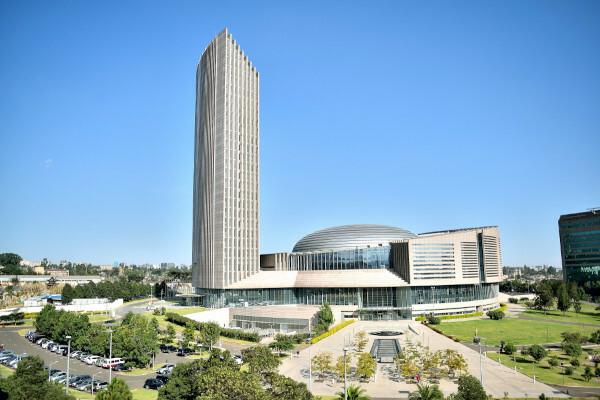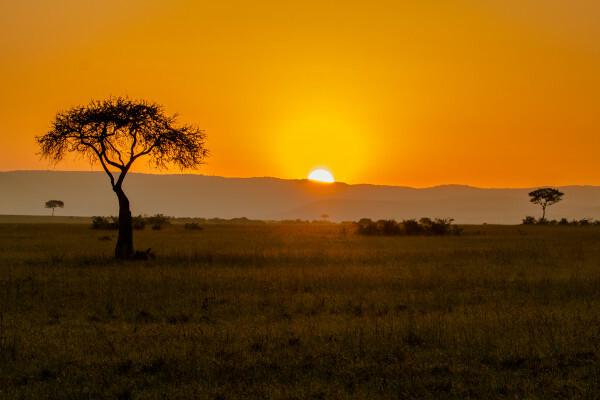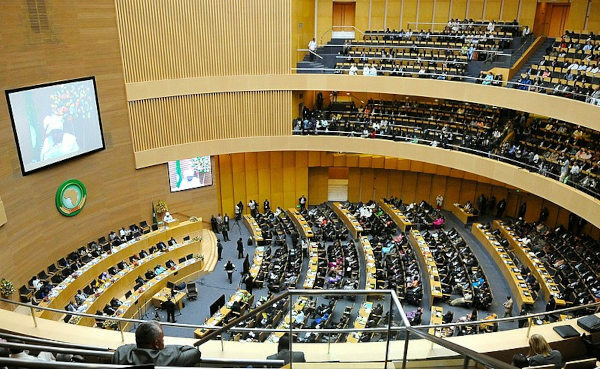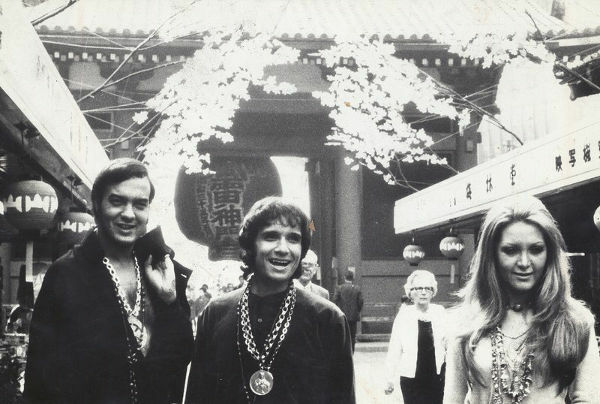A African Union is an international organization formed by all 54 countries and territories on the African continent. Successor to the Organization of African Unity (OAU), created in 1963, the African Union was launched in 2002 with the aim of promoting peace, cooperation and unity between African countries, in addition to working for the social, economic and political development of the African continent. Recently, the African Union has been actively involved in conflict mediation, aiming at pacification and political balance in Africa, in addition to being approved as a permanent member of the G20.
Read too: European Union — a political and economic bloc on the European continent made up of 27 nations
Topics in this article
- 1 - Summary about the African Union
- 2 - What is the African Union?
- 3 - Objectives of the African Union
- 4 - Economy of the African Union
- 5 - Culture of the African Union
- 6 - Geography of the African Union
- 7 - Demographics of the African Union
- 8 - Transformation from Organization of African Unity (OAU) to African Union (AU)
- 9 - History of the African Union
- 10 - Current issues of the African Union
- 11 - Solved exercises on the African Union
Summary about the African Union
The African Union is a continental organization launched in 2002 and made up of all countries and territories from Africa.
All 54 countries on the African continent are members of the African Union. Next to them is the territory of the Sahrawi Arab Democratic Republic.
Its objective is to consolidate peace and unity between African countries, mediating and avoiding conflicts. Furthermore, it acts to promote social, political and economic development on the continent.
The African Union's economy is based on the exploration of natural resources, such as minerals and oil, and tertiary activities. The bloc's largest national economy is Nigeria.
It is marked by enormous cultural diversity due to the thousands of ethnic groups that characterize the population of the African continent.
The African Union comprises the entire continent, with an area of 30 million km² and wide landscape diversity, which is due to the varied climate, the vegetation formed by forests, savannas and deserts and the relief characterized by plateaus and plains coastal.
Almost 1.4 billion people live in African Union countries.
The African Union replaced the Organization of African Unity (OAU), which was created in 1963. The transformation was requested by African heads of state on September 9, 1999 through the Sirte Resolution.
The African Union's entry into the G20 was approved on September 9, 2023.
What is the African Union?

The African Union (AU) is an organization continental, intergovernmental in nature, formed for all countries and territoriesAfrica. This body was officially opened in July 2002, replacing the Organization of African Unity (OAU). The headquarters of the African Union is located in the city of Addis Ababa, the capital of Ethiopia.
Do not stop now... There's more after the advertising ;)
The African Union is made up of all 54 countries on the African continent and also the Sahrawi Arab Democratic Republic, a territory located in northwest Africa and which claims its sovereignty and full recognition by the community International. Therefore, the following countries are part of the African Union:
South Africa |
Ghana |
Kenya |
Angola |
Guinea |
Central African Republic |
Algeria |
Guinea Bissau |
Democratic Republic of Congo |
Benin |
Equatorial Guinea |
Congo Republic |
Botswana |
Djibouti (or Djibouti) |
Rwanda |
Burkina Faso |
Lesotho |
Sao Tome and Principe |
Burundi |
Liberia |
Senegal |
Cape Green |
Libya |
Sierra Leone |
Cameroon |
Madagascar |
Seychelles (or Seychelles Islands) |
Chad |
Malawi |
Somalia |
Comoros |
Mali |
Sudan |
Costa do Marfim |
Morocco |
Southern Sudan |
Egypt |
Mauritius (or Mauritius) |
Tanzania |
Eritrea |
Mauritania |
Togo |
Eswatini |
Mozambique |
Tunisia |
Ethiopia |
Namibia |
Uganda |
Gabon |
Niger |
Zambia |
Gambia |
Nigeria |
Zimbabwe |
Objectives of the African Union
The African Union emerged with the main objective of promoting unity and solidarity between the countries of the continent. Reinforcing the actions of its predecessor, the Organization of African Unity (OAU), the African Union aims, in this sense, to mediate conflicts that occur between African countries and prevent new diplomatic problems from occurring between the nations of the continent.
In addition to conflict resolution, the African Union aims to promote economic integration and cooperation and social, political and economic development among African countries from different work fronts, as:
education, science and technology;
culture and sports;
health and nutrition;
agrarian development;
industrial and trade development;
infrastructure and energy;
democracy and human rights.
African Union Economy
The economy of the African Union, which is the economy of all countries on the continent, can be classified as one of the smallest in the world, in addition to being marked by high socioeconomic inequality. A considerable number of African countries have a low level of development and low national income, being classified as emerging countries or underdeveloped countries. Currently, Africa has a GDP of 3 trillion dollars,
Compare, in the following table, the Gross Domestic Product (GDP) of the five largest and five smallest national economies on the African continent:
Africa's largest economies |
Smallest economies in Africa |
||
Country |
GDP |
Country |
GDP |
Nigeria |
US$504 billion |
Sao Tome and Principe |
US$0.5 billion |
Egypt |
US$469 billion |
Comoros |
US$1.2 billion |
South Africa |
US$419 billion |
Guinea Bissau |
US$1.6 billion |
Algeria |
US$206 billion |
Seychelles |
US$2 billion |
Ethiopia |
US$149 billion |
Cape Green |
US$2 billion |
Primary and tertiary activities form the basis of the African Union's economy, with emphasis on mining and the extraction and sale of fossil fuels, such as oil and natural gas. Nigeria, for example, which is the organization's largest economy, is also a member of the Organization of Petroleum Exporting Countries (OPEC) and one of the main oil producers in the world. In addition to the exploitation of natural resources, agriculture, livestock and tourism, especially in countries such as Egypt, Morocco and South Africa, are essential for generating income at a national.
African Union Culture
The African Union presents a vast cultural richness due to the enormous diversity expressed by the population of African countries. It is estimated that there are more than 3,000 ethnic groups across Africa, while the total number of languages spoken exceeds 2,000. Each people and each ethnic group has its own system of beliefs and traditions, which can be observed from diverse cultural manifestations, such as typical dances, festivals, religion, music, gastronomy and even clothes.
The North of the continent differs a little from Sub-Saharan Africa due to the predominance of Arabic as a language and, also, of Islam as the language. religion practiced by the majority of the population, with the countries in this region, known as the Maghreb, part of the so-called world Arabic. However, these aspects are not restricted to North Africa alone, making it possible to identify Arab people and followers of Islam in several southern countries.
Geography of the African Union
The African Union is made up of all countries on the African continent. Africa is the third largest continent in area in the world, with approximately 30 million square kilometers, and is mainly located in the Hemisphere Lthis one from planet Earth, further divided between the Northern and Southern hemispheres. As we saw previously, 54 countries form the continent of Africa together with the unrecognized territory of the Sahrawi Arab Democratic Republic.

Depending on their geographical position, African Union countries experience very diverse climates, from the hot and humid equatorial to the desert climate. Due to the influence of climate, the vegetation cover of this continent is heterogeneous, being characterized by tropical forests, savannas and deserts, with emphasis on the Sahara Desert. Furthermore, African countries have relief formed by plateaus, mostly, and some areas of plains.
African Union Demographics
The African Union has a population of 1,373,486,000 inhabitants, according to data from the United Nations (UN). This amount is equivalent to approximately 17% of the entire population of planet Earth. Africa é, therefore, O second most populous continent in the world. Although it has a very large population, the African continent is marked by a relatively low population density, which is 46.3 inhabitants/km². It is also noted that the largest population concentrations on the continent are located in Sub-Saharan Africa, that is, south of the Sahara Desert.

An important aspect about the demographics of the African Union is the fact that the countries that make up the bloc have aelevated growth rate. The population of African nations has increased in size at a faster pace than the world average, tending to be above 2% per year. This happens mainly in countries that are in the second phase of the demographic transition, characterized by the demographic explosion. Examples of countries with high population growth are:
South Sudan (4.78%);
Niger (3.66%);
Burundi (3.59%);
Equatorial Guinea (3.36%);
Angola (3.34%).
Transformation from Organization of African Unity (OAU) to African Union (AU)
The Organization of African Unity (OAU) became the African Union (AU) following the Sirte Resolution, which dates back to September 9, 1999. The transformation aimed to expand the union's scope of action, broaden the work focus and, mainly, reinforce the feeling of union and cooperation between the countries of the African continent.
With this, African nations would not need to rely on external agents to maintain socioeconomic balance and policy on the continent, reinforcing the African Union's fight against colonization and apartheid, as highlighted by the organization.
History of the African Union
Before the establishment of the African Union, countries on the continent came together and formed the Organization of African Unity (OAU). Established in 1963, the OAU initially brought together 32 independent African nations, and was considered the first post-colonial organization created on the continent. The OAU was created based on the theoretical and ideological current of Pan-Africanism, which defends the union of all African peoples, in all their ethnic and cultural diversity, against influences of colonialism, which was responsible for restructuring the entire continent based on the foreign vision of Africa.

Internal and international cooperation were already foreseen in the objectives of the OAU, as well as the struggle for the union and identity of African peoples, in addition to the maintenance of their own culture. On September 9, 1999, the heads of state and leaders of African territories published the Sirte Resolution, which determined the creation of the African Union and expanded the scope of action of this organization. Now, the African Union would work on several fronts to mediate conflicts on the African continent and also for the socioeconomic, political and territorial development of local countries.
The African Union was officially founded in 2001, and launched on July 9, 2002 in the city of Durban, South Africa.. So that this international organization can redirect its focus and guide its work towards a more integrated Africa with higher rates of social and economic development, the agenda of proposals and actions known as Agenda 2063 was implemented, which aims at the complete transformation of nations Africans.
Current African Union issues
Current issues facing the African Union involve the ongoing conflicts on the continent. One of the forms of action of the African Union is the mediation of ethnic and territorial disputes that take place in Africa, aiming at the pacification of the continent. Among the operations led by the African Union, those that still take place today in Somalia, the Central African Republic and Ethiopia, which are just some of the conflict hotspots in the continent.
In the economic field, in 2018, the African Union brokered the creation of the African Continental Free Trade Area (AfCFTA). Furthermore, during the 19th G20 Summit that took place in India in 2023, the entry of the Union was approved African in the group as a permanent member, exactly on the date that completed 24 years of the Resolution of Sirte.
See too: Customs union — a type of economic bloc of free trade and free movement of people, goods and goods
Solved exercises on the African Union
Question 1
The Organization of African Union (OAU) was the pioneer in uniting African countries into a single organization with the aim of promoting unity and cooperation on a continental scale. Just over three decades after its creation, the leaders of these nations proposed the creation of the African Union, which was officially launched in 2002. In addition to those previously mentioned, the African Union also works with the aim of:
A) implement a policy of economic protectionism in African countries.
B) mediate conflicts aiming at the pacification of the continent.
C) slow down the scale of social and political development on the continent.
D) expand the participation of African countries in organizations such as OPEC and the OECD.
e) implement a single currency on the African continent.
Resolution:
Alternative B.
Conflict mediation was already carried out before the African Union, which intensified this type of work aiming to pacification of the continent to leverage socioeconomic development policies that are gradually being implemented.
Question 2
(Uece) The African continent has been the scene of violent conflicts for a long time. In Angola, the confrontation involved armed organizations that had been vying for power since that country's independence. In the Democratic Republic of Congo, disputes involved the State and armed groups; In Sierra Leone, civil war lasted from 1991 to 2002. Intermediaries interested in war, in some cases, stimulate it by supplying weapons and soldiers; in other cases, they support governments or opposition guerrillas.
The products disputed by the State and armed groups in these three African countries are:
A) diamond and oil.
B) agricultural pesticides and natural gas.
C) metals and pharmaceuticals.
D) processed foods and fabrics.
Resolution:
Alternative A.
Conflicts, especially in the countries mentioned in the statement, are within the scope of action of the African Union. In the case in question, mineral resources such as diamonds and oil are in dispute.
Image credits
[1]Hailu Wudineh TSEGAYE / Shutterstock
[2]U.S. Department of State / Wikimedia Commons (reproduction)
Sources
African Union. Available in: https://au.int/.
ALLEN, Nate. African-Led Peace Operations: A Crucial Tool for Peace and Security. Africa Center for Strategic Studies, 09 Aug. 2023. Available in: https://africacenter.org/spotlight/african-led-peace-operations-a-crucial-tool-for-peace-and-security/.
SCHREIBER, Mariana. Why is the African Union's entry into the G20 historic? BBC News Brazil, 09 Sep. 2023. Available in: https://www.bbc.com/portuguese/articles/c6p60mv6je2o.
UNData. Available in: https://data.un.org/en/index.html.
Would you like to reference this text in a school or academic work? Look:
GUITARRARA, Paloma. "African Union"; Brazil School. Available in: https://brasilescola.uol.com.br/geografia/uniao-africana.htm. Accessed September 19, 2023.
Heat wave will hit Brazil this week, warns the National Institute of Meteorology (Inmet)...
Click on the link to see Joe Biden’s biography. Learn about his early life, private life,...
Click here and read the analysis of the work “The Little Prince”. Discover its main...


